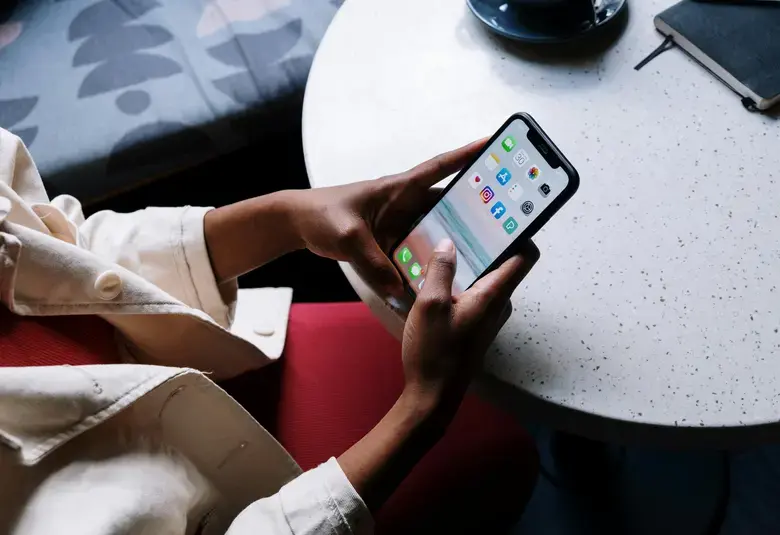Modulating central and peripheral innate immunity has potential in Alzheimer’s Disease. Following animal modeling, clinical trials are now in prospect, Howard Weiner, Harvard, USA, told an ADPD 2019 plenary. The session also heard of studies from Germany showing microglial dysfunction can be reversed and the ability to limit amyloid accumulation restored.
중추 및 말초의 선천적 면역력 조정이 알츠하이머병 분야에서 활용될 가능성이 보입니다. 미국 하버드 의학대학원의 하워드 위너(Howard Weiner) 박사는 ADPD 2019 총회에서 동물 모델링에 이어 현재 임상시험을 진행할 가능성이 보이고 있다고 말했습니다. 또한 해당 세션에서는 소교세포 기능 장애는 원상 복구가 가능하며, 아밀로이드 축적을 제한하는 능력 또한 회복될 수 있다는 독일의 연구 결과도 소개되었습니다.
An immunostimulatory adjuvant based on outer membrane proteins from Neisseria meningitidis and lipopolysaccharide from Shigella flexneri is one technique Howard Weiner, Harvard Medical School, Boston, USA, and colleagues have been exploring.
수막구균성 수막염(Neisseria meningitidis)의 외부막 단백질과 플렉스네리 이질균(Shigella flexneri)의 지질다당류를 바탕으로 한 면역 자극 증강제는 미국 보스턴 하버드 의학대학원의 하워드 위너 박사를 비롯한 연구진이 분석 중인 기술입니다.
In a mouse model of Alzheimer’s disease (AD), nasal administration of the adjuvant starting at five months of age was shown to prevent brain amyloid deposition when animals were sacrificed at 14 months.
알츠하이머병(AD) 마우스 모델에서는 생후 5개월부터 증강제를 코로 투입하여 14개월 차에 희생시켜 검사한 결과 뇌 아밀로이드 축적 예방 효과가 있는 것으로 나타났습니다.
Professor Weiner et al have also demonstrated that the adjuvant activates human bone marrow-derived CD11b+ macrophages, leading to a dose-dependent uptake of soluble Aβ1-42. A human trial in AD is planned.
또한 위너 박사와 연구진은 증강제가 인간 골수 유래 CD11b+ 대식세포(human bone marrow-derived CD11b+ macrophages)를 활성화하며, 이는 용량의존적인 가용성 Aβ1-42 흡수(uptake)로 이어진다는 사실을 입증했습니다. 알츠하이머병 환자 대상 임상시험 계획이 예정되어 있습니다.
IL-10 secreting T cells dampen microglial inflammation, and short-term memory improves
IL-10 분비하는 T 세포로 소교세포 염증 약화, 단기 기억력 개선
The nose has it
답은 코에 있다
A second set of pre-clinical experiments shows that intranasal administration of an anti-CD3 antibody protects against myelin loss and axonal injury. In vivo, astrocytes demonstrate an altered immune phenotype; and the inflammatory phenotype of microglia is also changed towards one consistent with repair rather than pathogenesis.
전임상 실험 2번째 세트 결과에 따르면 항CD3 항체를 비강 내로 투입하면 수초(myelin) 손실과 신경돌기(axonal) 손상으로부터 보호할 수 있습니다. 생체 내에서 성상 세포는 생체 밖에서와는 다른 바뀐 면역 표현형(phenotype)을 나타내며, 소교세포의 염증성 표현형도 병인으로 작용하기보다는 복구를 돕는 형태로 변형됩니다.
In control mice, anti-CD3 reverses the old (24 month) gene signature of microglia. IL-10 secreting T cells migrate to the brain. Once there, they dampen microglial neuroinflammation. Work on human dosing of anti-CD3 has begun, with the aim of reducing the inflammatory brain burden in a range of diseases including progressive Multiple Sclerosis and Alzheimer’s.
대조군 마우스에서 CD3 저해는 소교세포의 노화(24개월) 유전자 시그니처 (gene signature)를 역전시킵니다. IL-10을 분비하는 T 세포가 뇌로 이동합니다. 이동한 후에는 소교세포의 신경 염증을 완화합니다. 최근에는 항CD3 항체를 인간에게 투여하는 실험이 시작되었습니다. 이 실험의 목표는 진행형 다발성 경화증 및 알츠하이머병을 포함한 여러 질환 환자의 염증성 뇌 부담을 줄이는 것입니다.
Antibiotics reverse neurodegenerative signature
항생제를 통한 신경퇴행성 징후(signature)의 역전
The neurodegenerative disease signature of microglia can also be reversed by manipulating the microbiome. Gut bacterial composition changes during aging, and changes correlates with Aβ plaque in an AD model. Modifying the diet can restore the bacterial composition seen in young animals.
마이크로바이옴을 조정하면 소교세포의 신경퇴행성 질환 징후(signature)도 역전될 수 있습니다. 장의 박테리아 구성은 노화가 진행됨에 따라 변하고, 알츠하이머 모델에서 이러한 변화는 Aβ 플라크와 관련이 있습니다. 식단 조절로 박테리아 구성을 젊은 동물에서 보이는 구성처럼 회복시킬 수 있습니다.
Using oral gavage to colonize mice with Allobaculum reduces the role of genes related to inflammation and apoptosis, so reversing age-associated brain changes, Professor Weiner told the meeting. Antibiotics can also dampen the neurodegenerative disease signature of microglia, decreasing the influence of APOE and Clec7a.
위너 박사는 쥐에 구강 위관 영양 투여를 통한 알로바쿨룸(Allobaculum) 서식이 염증 및 세포자가사멸(apoptosis)과 관련된 유전자의 역할을 줄이면서 노화와 연관이 있는 뇌의 변화를 역전시킨다고 회의에서 설명했습니다. 항생제는 APOE와 Clec7a의 영향을 감소시키며, 소교세포의 신경퇴행 징후를 약화시킵니다.
Can aged microglia be rejuvenated?
노화한 소교세포도 원상 복구가 가능한가?
New cells for old
노화를 역전시킬 새로운 세포
In the healthy state, microglia are involved in brain immunity, synaptic pruning, provision of neurotrophic support and phagocytic clearance. In AD, however, there is immune dyshomeostasis, neurotoxicity and reduced phagocytic function. An important question is whether it is possible to rejuvenate diseased microglia.
건강한 상태에서 소교세포는 뇌 면역력, 시냅스 가지치기(pruning), 신경영양 제공 및 식세포에 의한 제거에 관여합니다. 그러나 알츠하이머병의 경우, 면역 항상성 장애, 신경 독성, 식세포 기능 저하 등의 증상이 발생합니다. 여기서 중요한 질문은 질병에 기능이 감퇴된 소교세포의 원상 복구 가능 여부입니다.
Sabrina Tahirovic (German Center for Neurodegenerative Diseases, Munich, Germany) and colleagues believe that it is – and they have encouraging results from in vitro experiments in which brain slices from young and healthy wild-type mice are cultured alongside brain slices from their aged amyloid-bearing counterparts.
독일 뮌헨 신경퇴행성질병센터(German Center for Neurodegenerative Diseases)의 사브리나 타히로비치(Sabrina Tahirovic) 박사 및 연구진은 원상 복구가 가능하다고 말합니다. 이들은 어리고 건강한 정상형(wild-type) 쥐의 뇌 슬라이스를 노화한 아밀로이드 보유 쥐의 뇌 슬라이스와 함께 배양한 체외 실험 결과에 주목했습니다.
In the co-culture model, the amyloid aggregates are stripped of their halo and converted to core-only plaques. Microglial proliferation and the reduction in plaque size could be achieved by exposing old microglia to the conditioned media from young microglia. So young microglia release a soluble factor that restores the plaque-clearing capacity of old cells. This effect can also be achieved by adding granulocyte‐macrophage colony‐stimulating factor (GM‐CSF).
이 동시배양 모델(co-culture model)에서 아밀로이드 응집물은 겉부분(halo)가 벗겨지고 중심부분만 남은 플라크로 변형됩니다. 노화한 소교세포를 젊은 소교세포의 건강한 배지에 노출시키면 소교세포 분열이 증가하고, 플라크 크기가 감소할 수 있습니다. 즉, 젊은 소교세포는 노화한 세포의 플라크 제거 능력을 회복시키는 가용성 물질을 방출하는 것입니다. 또한 과립구 대식세포 집락 자극 인자(GM‐CSF)를 투입하는 것도 동일한 효과를 얻을 수 있습니다.
Co-culture led old microglia to cluster around amyloid plaques and clear the halo
동시배양 모델, 노화한 소교세포를 아밀로이드 플라크 주변 응집체로 유도하여 할로 제거
The next stage is to characterize the mechanism underlying GM-CSF stimulated rejuvenation of cells’ capacity to clear plaque. But we perhaps now have a model that can be used to test ways of reinforcing microglial phagocytosis as a means of treating AD.
다음 단계로는 GM-CSF로 자극하여 세포의 플라크 제거 능력을 원상 복구하기 위한 메커니즘을 정립해야 합니다. 하지만 적어도 이제는 알츠하이머병 치료 방법으로 소교세포의 대식작용 강화 방법을 시험하기 위해 활용할 모델을 확보한 것으로 보입니다.
본 자료는 Global Lundbeck 의학부에서 선별한 콘텐츠이며, 한국룬드벡의 의견과 다를 수 있습니다




